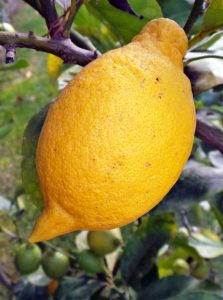
The taste and scent of lemon is distinctive but not restricted just to lemon fruits. Essential oils in the leaves and skin of citrus fruits include several aromatic compounds which impart that lemony smell. Many other plants besides citrus contain the same chemical compounds – including d-limonene, citral (and its naturally occurring isomers neral and geraniol), citronellal and various terpenes – that we perceive as a citrus-like smell from the foliage or flowers. Different combinations and ratios of these chemicals produce a range of fragrances which all suggest lemon in a variety of intensities and unique notes from floral to fruity.
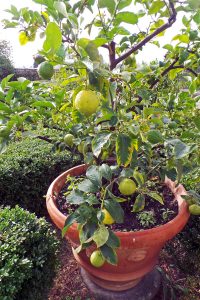
Not everybody can grow a lemon tree but anyone can have lemon scent and flavor in their garden by planting lemon scented herbs to impart a bright citrus flavor to teas, salads, pasta dishes, cookies, vinegars, marinades, and many other foods. They can also be incorporated into household cleaners, soaps, and potpourri. Many plants that have a lemony scent are naturally repellent to insects and some have been incorporated into mosquito repellents, while others (such as lemon balm) can be effective when leaves are crushed and rubbed onto skin. And even if they aren’t used for these practical applications they can still be enjoyed just for the fresh scent of lemon while working in the garden. Most of these have to be crushed to smell the lemon scent.
Some of the most common and easy to grow, lemon-flavored plants – all of which can be cultivated in containers – include:
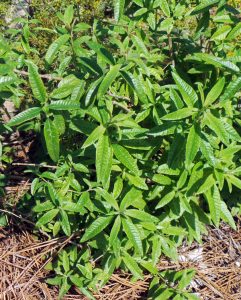
Lemon verbena (Aloysia triphylla; the synonym citriodora is still sometimes incorrectly used for this species) is a tender deciduous woody shrub native to South and Central America (Zones 8-10) with a strong lemon scent to the foliage, which is retained even when dried. Some of the lemony flavor is lost in cooking, but it can be used in almost any dish where a dash of lemon is required. The leaves are frequently used in potpourri, teas (tisanes) or to flavor chilled water, sauces, fruit salads, marinades for fish and poultry, in drinks and on vegetables. The flavor is best when harvested right before it blooms in delicate upright spikes of small lavender-white to mauve flowers. It can become a rangy, large shrub or small tree in tropical climates, but remains much smaller in containers or if grown as an annual. It needs full sun in our cooler climate and moist, well-drained soil to thrive, and can be brought indoors before frost to keep over the winter in semi-dormancy.

Lemongrass (Cymbopogon citratus) is a tender perennial native to tropical areas of East Asia (Zones 9-11) that grows to form a large clump up to 3 feet tall in hot and humid summers. Although it grows best when planted in the ground, it can be kept in a container to keep as a houseplant or bring in to overwinter. The thickened stems and grassy leaves have a mild lemon flavor which is not retained very when dried. It is a common ingredient in many Asian cuisines, especially Thai and Vietnamese, particularly in soups and with chicken.

Lemon Balm (Melissa officinalis) is a perennial in the mint family which can spread by rhizomes and self-seeds readily (but is easy to remove and cutting back after flowering will reduce volunteers). It can also be grown in a container to limit the spread in the garden. Native to southern Europe (Zones 4-9), the fresh or dried foliage has an intense lemon scent and an even sweeter flavor that is often used to flavor and decorate sorbets, add to fruit salads and vegetable dishes, for tea or cool drinks and as a garnish on desserts. The 2 foot high plants with crinkled green leaves and tiny white or pale lavender flowers that are very attractive to bees can be cut multiple times during the season for drying and to encourage bushier plants. The young, tender leaves are better for culinary use as older leaves can develop a somewhat soapy flavor.
Lemon Mint (Mentha x piperita f. citrata ‘Lemon’) has aromatic foliage with a lemon scent. Like all mints it spreads vigorously, so it might be better kept in a container. Harvest the foliage up until it flowers, then cut back and use the regrowth.
Lemon beebalm or lemon mint (Monarda citriodora) is an annual (or biennial) in the mint family native to southern North America. Its strongly lemon-scented foliage (that is also described as resembling oregano late in the season) can be used to make tea or cold drinks, and salads, desserts and other cold dishes can be garnished with leaves or flowers.
Lemon Catmint (Nepeta cataria ‘Citriodora’) is a lemon-scented perennial hardy in Zones 3-9 with gray green leaves on 2-3 foot stems, white flowers, and a strong lemon fragrance. This cultivar isn’t as sprawling as many of the common ornamental catmints – but cutting it back hard will help keep it neat – and is usually not attractive to cats like catnip is. It is best used for tea, either fresh or dried.

Lemon Basil (Ocimum x citriodorum, a hybrid between O. basilicum and O. americanum) and cultivars, such as ‘Lemon Sweet Dani’ and ‘Mrs. Burns’, are tender annuals with small, but profuse lemon-scented leaves with anise undertones. Grow them and use the foliage or tiny white edible flowers just like regular sweet basil, pinching and harvesting the plants regularly to encourage more growth. The leaves retain their flavor in cooking, and are great for making pesto, with fish or seafood, or in desserts and beverages.
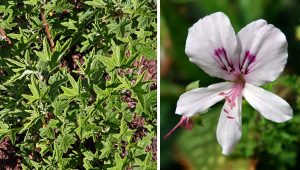
Lemon-Scented Geraniums include several species of tender perennials (such as Pelargonium crispum, P. citrosum and P. citronellum) from South Africa (hardy in Zones 9-10) which are grown more for their scented leaves than for the flowers. They often have just a slight bit of lemon combined with other scents, but are often put in sugar to scent the sugar, line baking pans with fresh leaves to flavor cakes, and the dried leaves are added to sachets or potpourri. The essential oils used to be heavily used in the perfume industry.
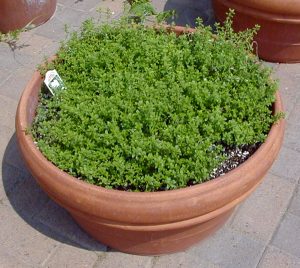
Lemon thyme (Thymus x citriodorus) is an evergreen perennial that combines the flavor of thyme with a hint of lemon that can be used in almost any recipe that calls for regular thyme or to make traditional thyme tea to help soothe a sore throat. Different cultivars, such as ‘Aureus’, ‘Doone Valley’, ‘Gold Edge’, ‘Silver Queen’ and ‘Variegata’, have variegated foliage but are grown like regular thyme in full sun and lean, well-drained soil.
Lemon eucalyptus or lemon-scented gum (Corymbia (=Eucalyptus) citriodora) is an Australian tree with a fantastic lemon scent when the leaves are bruised or in hot conditions when the oils volatilize. Other Australian trees with a strong lemon scent include lemon-scented ironbark (Eucalyptus staigeriana), lemon tea tree (Leptospermum petersonii) and lemon aspen (Acronychia acidula). All of these would need to be container plants in our climate if they could even be acquired here.
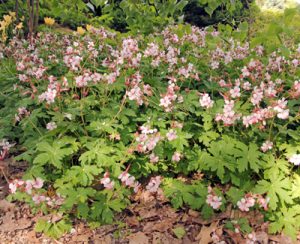
Most lemon-scented plants used as culinary plants have to be crushed to release the fragrance but there are some plants that release their fragrance through the flowers. Some perennials hardy to zone 4 that are suggested to have a lemon fragrance to the flowers include purple-flowered gas plant (Dictamnus albus var purpureus), Geranium x cantabrigiense ‘Biokovo’, some cultivars of iris, such as ‘Blue Rhythm’ and ‘Flavescens’, Polygonatum odoratum ‘Lemon Seoul’, and Sambucus nigra ‘Black Beauty’ and Black Lace™.
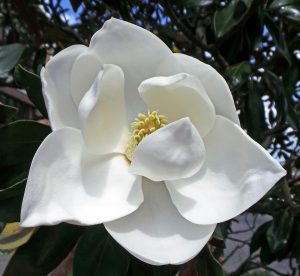
The rose ‘Climbing Angel Face’ is described as having a strong lemon fragrance. Other woody plants not hardy in the Midwest that some people describe as having a “lemon-like” or “lemon with a touch of vanilla in it” scent (while others say they can’t detect even any lemon undertones in those same plants) include Daphne odorata, some Magnolia grandiflora cultivars (especially ‘Little Gem’) and winter honeysuckle, Lonicera fragrantissima. However the Australian lemon myrtle, Backhousia citriodora, a tree with edible flowers and leaves, permeates the air with a lemonade aroma in summer when temperatures are high.

– Susan Mahr, University of Wisconsin – Madison
Ask Your Gardening Question
If you’re unable to find the information you need, please submit your gardening question here:





 Marigolds
Marigolds Create a Butterfly Garden
Create a Butterfly Garden Plant Flowers to Encourage Beneficial Insects
Plant Flowers to Encourage Beneficial Insects Forcing Bulbs
Forcing Bulbs


